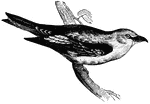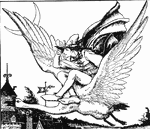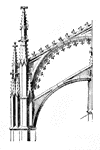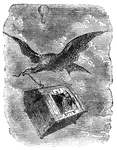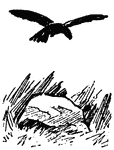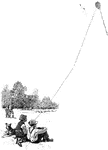
Flying Fish
The Flying Fish is enabled to fly by having fins which approach in extent the wings of a bird, (Hooker,…

Flying lizard
This type of lizard uses their wings like a parachute when they throw themselves upon their prey from…
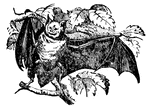
Horseshoe Bat
Bat, one of the group of wing-handed, flying mammals, having the forelimb peculiarly modified so as…

Storming of Fort Donelson
"Storming of Fort Donelson- decisive bayonet charge of the Iowa Second Regiment on the Confederate intrenchments…

First naval battle
"First naval battle in Hampton Roads between the Confederate iron-plated steamers Merrimac, Yorktown,…

Flying Lemur
"Genus Galeopithecus. - The animals of this genus resemble the lemurs and the bats, having the general…
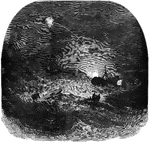
Monitor
"Loss of the Monitor- gallant attempt of the officers and crew of the United States steamer…

Army of the Potomac
"Advance of the Army of the Potomac. Occupation of Winchester, VA., and the abandoned Confederate Fortifications,…

Foraging spoils
"Return of a foraging party of the Twenty-fourth Regiment, Connecticut Volunteers, with their spoils,…

Flying Squirrel
"Resemble the common squirrels, with a lateral membrane similar to that of the Pteromys. By means of…
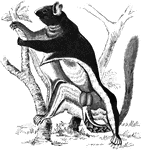
Pele's Anomalure
"It resembles the flying-squirrel, in having a flying membrane on each side, and using them in the same…

Battle of New Berne
"Battle of New Berne- Lieutenant Hammond capturing Colonel Avery, of South Carolina, while he was endeavoring…
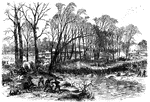
Battle of Stone River
"Battle of Stone River, Tenn. The decisive charge of General Negley's division across the river- the…
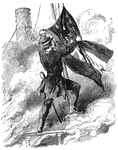
Capturing the Confederate Flag
"Lieutenant J. H. Raymond capturing the Confederate flag from the burning Confederate steamer Fanny,…

Fort Stevens
"The operations near Washington, scene of the fight in front of Fort Stevens, July 12th-13th, 1864.…

Flying dragon
The flying dragon gets its name from its ability to glide for short distance using a thin membrane.
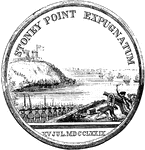
Wayne Medal Back
"Gold medal awarded by Congress to General Wayne. This is a representation of the medal, the size of…

Flying Gurnard
"Is from six to fifteen inches long, and is found in the Mediterranean, and also in the European and…

Bonito
"Resembles the tuna in form, but is seldom more than thirty inches long. It is extensively distributed,…

Flying Fish
"Is twelve to fourteen inches long, and has the ventral fins placed anterior to the middle part of the…
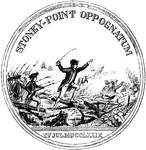
Stewart Medal Back
"Medal awarded to Major Stewart. This represents the medal the size of the original. On the back side…
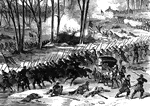
Battle of Stone River
"Battle of Stone River, Tenn. The decisive charge of General Negley's division across the river- the…

Battle of Stone River
"Battle of Stone River, Tenn. The decisive charge of General Negley's division across the river- the…
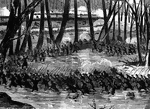
Battle of Stone River
"Battle of Stone River, Tenn. The decisive charge of General Negley's division across the river- the…
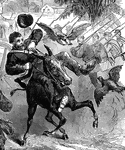
Foraging Spoils - Startled Horse
"Return of a foraging party of the Twenty-fourth Regiment, Connecticut Volunteers, with their spoils,…
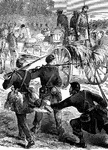
Foraging Spoils near Baton Rouge
"Return of a foraging party of the Twenty-fourth Regiment, Connecticut Volunteers, with their spoils,…
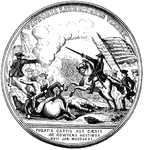
Morgan Medal Back
"Gold medal awarded to Morgan. The following are the devices and inscriptions upon the back of the medal:…

Washington Medal Front
"Silver medal awarded to Washington. The following are the device and inscriptions on the front: An…
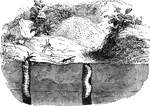
Tiger Beetle Larve
"The common European species, Cincindela campestris, may be found flying and running around…

Tiger Beetle and Larvae
"The common European species, Cincindela campestris, may be found flying and running around…
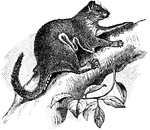
Scale-Tailed Squirrel
"A remarkable family of flying rodents of Africa; the scale-tailed squirrels."-Whitney, 1902
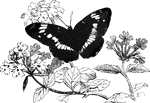
Sybil Butterfly
"The Sybil Butterfly, P. Sybilla, sometimes called the Mourning Butterfly, is a common…

Long-Eared Bat
"Bat is the common name of all animals of the class mammalia which are furnished with true wings, and…

Maxim’s Flying Machine
"A Flying Machine is a device for enabling man to navigate the air. The feat of flying has been often…
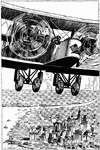
Captain Roy N. Francis over NYC
Captain Roy N. Francis, one of the best-known American pilots, flying over New York.
